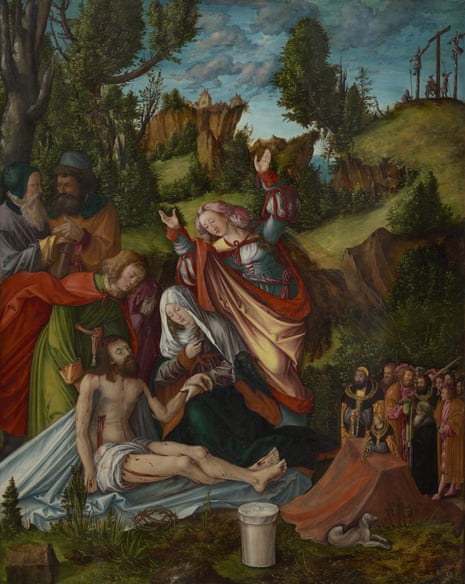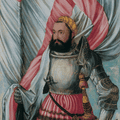
Tour-guide sleuth puzzles over identity of painter of reassembled Lamentation Altarpiece
After 14 years of research, Christine Cluley sheds light on the work by a ‘Franconian Master’ now on show at Compton Verney
Could a tour guide, someone regularly working close to great works of art, really solve a puzzle that had defeated other scholars? This was the challenge facing Christine Cluley, one of the long-term “experience interpreters” who takes visitors around the collection at Compton Verney in Warwickshire. Now the detective work of the aptly named Cluley has narrowed the hunt for a mysterious unknown painter famous for creating a 500-year-old altarpiece. The work, which is to be displayed in its entirety this Thursday, has been reassembled for the first time in 30 years.

Cluley had always admired the two “wing” panels of the anonymous German work known as the Lamentation Altarpiece that are kept at Compton Verney, and she has spent 14 years unravelling its riddles. Chief among the mysteries is the identity of the painter, thought to have been born around 1472 and to have died in 1563.
The artist is usually described simply as the “Franconian Master” in reference to the region of Bavaria where the altarpiece was made in the first quarter of the 16th century. But now Compton Verney curator Jane Simpkiss believes the invaluable work of Cluley, together with new detailed comparisons between the side panels and the centrepiece, backs up some exciting new theories.
“Christine’s research into the history of the work has established much more about its provenance, and that points to particular names,” she said. “We really feel that we are moving in a positive direction.” Simpkiss is now confident enough to say not only that the side panels belong with the centrepiece, which was at one stage in doubt, but also that two candidates have emerged as the probable artist: Hans Baldung and Wolfgang Traut. Like the mysterious Franconian Master, these men were contemporaries and admirers of the well-known artists Thomas Cranach and Albrecht Dürer. Dürer was once believed to have been involved in the creation of the altarpiece.
The three reunited panels – including the dramatic centrepiece, normally held in the National Galleries of Scotland’s collection – will go on display at Compton Verney as a key attraction in its Northern European galleries until February next year.
“It is a wonderful chance to bring the wings back together with the very fragile central panel,” said Simpkiss. “There are a lot of similarities with the work of Baldung, who was one of Dürer’s most famous pupils as well as a friend of his brother.”
The central panel of the richly coloured piece, which has the full title The Lamentation of Christ with a Group of Donors, shows Jesus’s body brought down from the cross as Mary Magdalene expresses her sorrow in a traditional gesture of grief. The images on the insides of the wings depict St Christopher and St George, while the outside pictures are of St Catherine and St Barbara, which Simpkiss believes may have been painted a year later, in 1516, by a different artist.

“Christine has taken the provenance back to the 18th century, if not all the way back to the 16th century. She found it in a German inventory of 1768. It can also be seen in another painting and later came into the hands of a Prussian post master general,” Simpkiss said.
The altarpiece eventually travelled to England in the 1920s, going to a stately home in Shropshire. Sir Nikolaus Pevsner, the renowned art historian, saw it in a church in Little Ness in 1928 and deemed it should be valued and sold. But it was not until 1993 that a vicar decided to take it to auction, after which it was separated due to a lack of definite proof that it had once formed one artwork.
Source: theguardian.com



